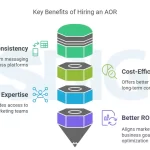Utilizing a combination of intricate algorithms and processes, search engines provide users with accurate and relevant results for their queries. The general operation of a search engine can be categorized into four primary components: crawling, indexing, ranking, and serving results.
Each search engine may employ its own unique methods.
The act of crawling
This is the method by which search engines identify content that is accessible to the general public on the internet. Specialized software agents known as crawlers or spiders traverse the Internet by following links from one page to another. Information such as URLs, website structure, and content, including text, images, and videos, are collected by these crawlers.
Indexing
After the data has been gathered, it is stored in a massive database called an index. During indexing, the search engine analyzes the collected data to determine the subject matter of each webpage. It performs a limited analysis of various elements, including text, headings, meta tags, and even images and videos. Then, these analyses are organized in a manner that facilitates the rapid retrieval of data in response to a search query.
Visit site for Information : A Guide to Secure Top Spot for Your Website in Google Search Engine
Positioning
When a user inputs a search query, the search engine consults its index to determine which results are most pertinent. As there may be thousands or millions of pages containing comparable information, these results are sorted using a ranking algorithm. The classification is determined by a variety of factors, including:
- Relevance- The degree to which the content corresponds to the user’s query.
- Quality- Indicators of a website’s credibility and expertise, including the quantity of high-quality backlinks, user engagement, and brand authority.
- User Experience- Rankings can be impacted by elements such as page load speed, mobile-friendliness, and layout.
Regarding queries with local intent, search engines may take the user’s location into consideration (e.g., “restaurants near me”).
Depending on the search engine, the particular criteria and their significance may differ and even evolve over time.
Delivering Outcomes
Upon completion of the ranking procedure, the search engine presents the user with the categorized list of results, typically beginning with the most pertinent or useful page. These results frequently incorporate supplementary components such as prominent excerpts, images, or maps, contingent upon the nature of the search query.
Ongoing Learning and Updates
The algorithms of search engines are perpetually updated to enhance the precision and relevance of search results. This requires the analysis of user behavior data, the adaptation to new content types, and consideration of the constantly changing internet landscape. Additionally, certain search engines employ machine learning methods to enhance their comprehension of user intent and deliver more customized results.
Conclusion
By means of these intricate and interconnected procedures, search engines endeavor to furnish users with prompt, precise, and pertinent responses to their queries.
Contact us by phone or email how we can help you in your business with SEO or PPC to achieve its search objectives. Our digital marketing and website design and development services can also be tailored to fit the needs of your business.
Contact us Now to schedule a meeting about your next project or write to us at sales@amsdigital.in with your detailed scope of work.















